Thinking about exploring Indonesia? I’ve put together a 3-week Indonesia itinerary that actually delivers. Since I’ve tested it personally, this isn’t just another theoretical online guide.
I’ll tell you straight up – this was one of the most amazing trips I’ve ever taken!
Indonesia just steals your heart. With thousands of islands, each has its own special charm. You’ll find dream beaches, history-packed temples, and volcanoes that will leave you speechless.
The food scene? Absolutely incredible! Honestly, some of the most delicious flavors I’ve ever experienced. And the locals are so friendly that you’ll feel right at home from day one.
Whether you explore the less crowded Java or the popular Bali – you’ll fall for this place just like I did!
OK, let’s get started. Grab yourself a coffee (Javanese if you have it!) and let’s go through this plan!
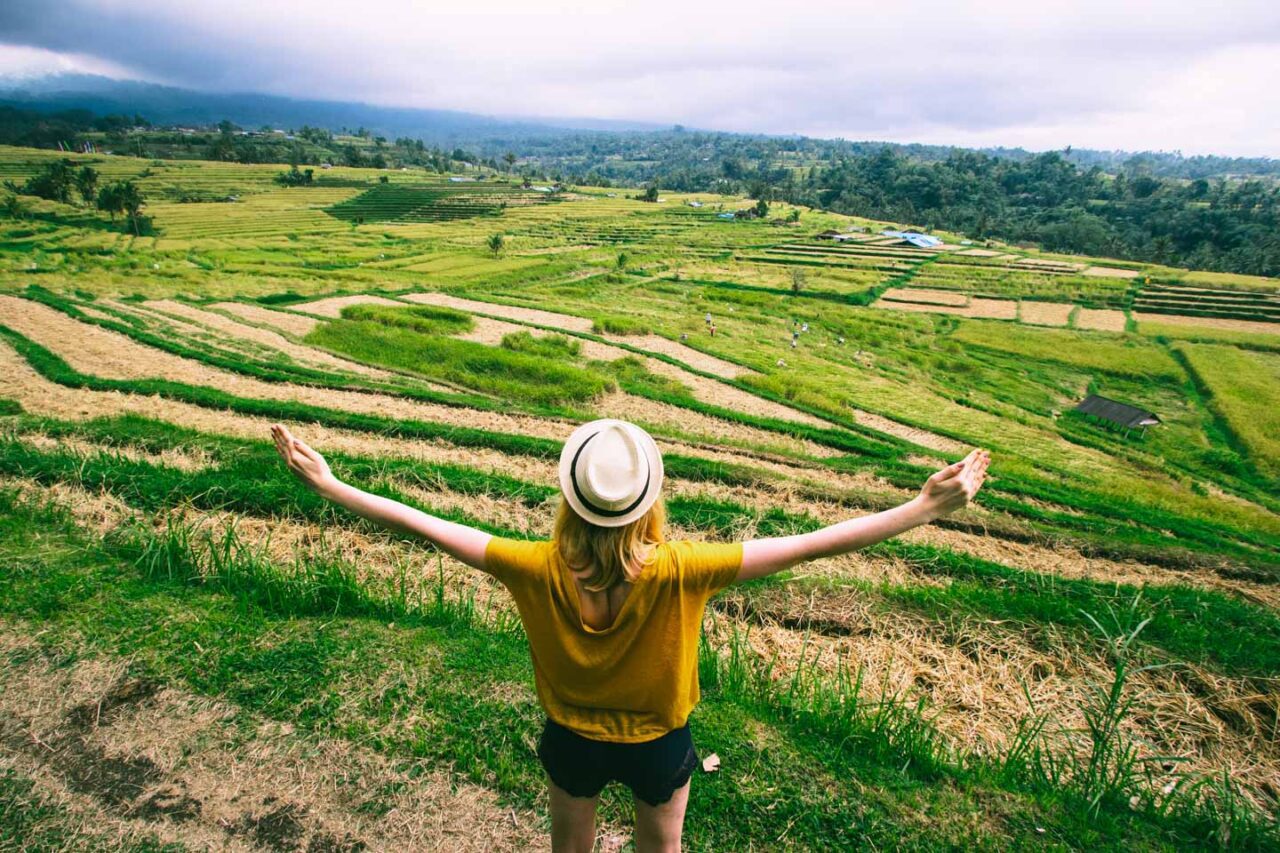
Day 1 of Your Indonesia Itinerary: Arriving in Bali
Your adventure begins with landing in Denpasar, Bali. This is the largest airport in the area and an ideal starting point.
After the long haul from the US, give yourself the first day to just decompress and adjust. Trust me, between jet lag and the heat, your body needs time to catch up! Skip the sightseeing plans for day one – just kick back and recharge instead.
Best to stay somewhere in Kuta or Seminyak. Hotels there are comfortable, and the beach is within reach. Great base for exploring the island.
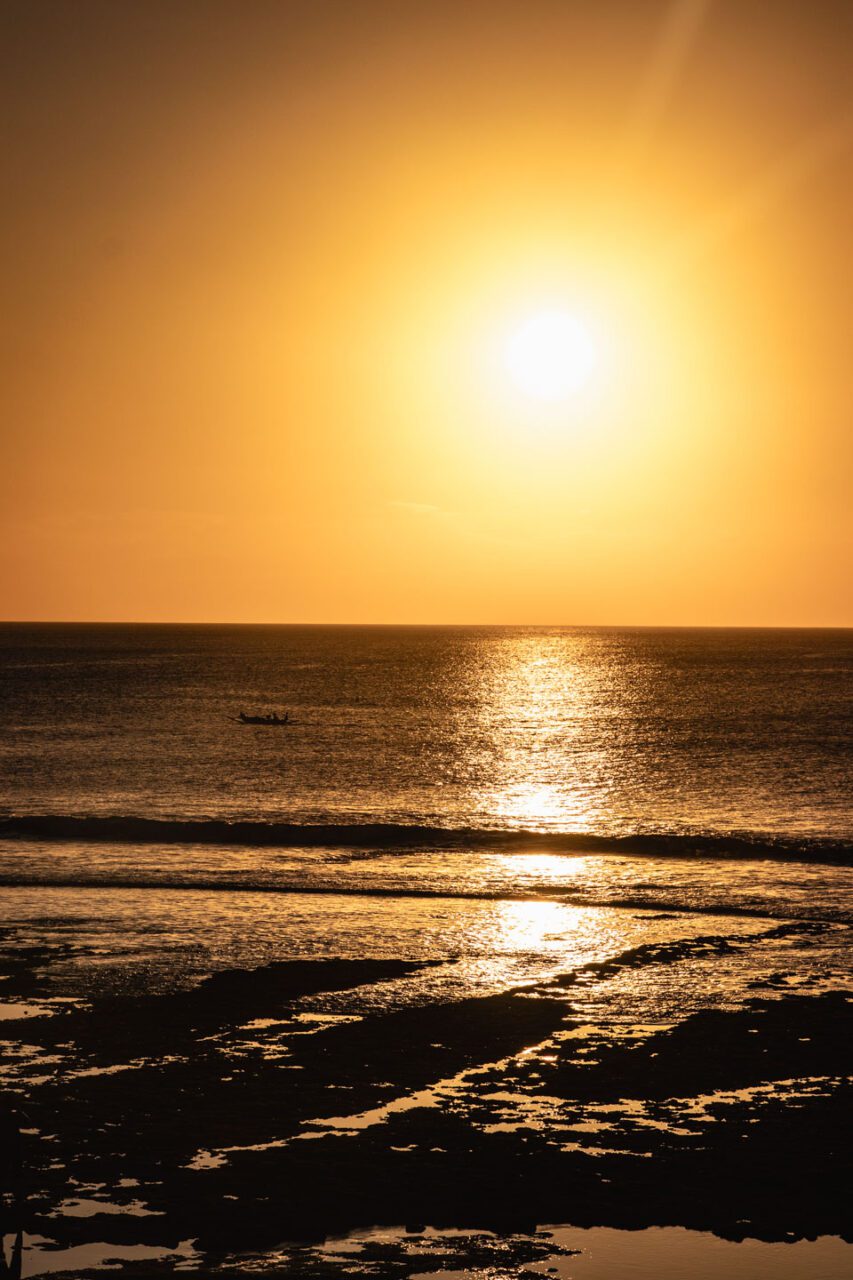
Where to Stay
I recommend Sovereign Bali hotel near the airport. Modern, comfortable, with a touch of local style. Perfect for the first night after a long flight.
Day 2: Heading to Java – Yogyakarta
On the second day, fly to Java, to Yogyakarta. This is the cultural heart of the island and a great base for exploring local attractions.
After checking into your hotel, be sure to walk along the famous Malioboro Street – the commercial center of the city. You’ll be shocked by how much is happening there! Food stalls, crafts, street artists – it’s packed!
Try local delicacies: gudeg (sweet-spicy jackfruit dish) and bakpia (filled pastries). Finger-licking good!
In the evening, drop by one of the local restaurants. Javanese food with traditional gamelan music – what more could you want?

Where to Stay
I recommend Jogja Village. Nice hotel in Javanese style, with a pool and good service. Plenty of eateries nearby, and main attractions are easily accessible by taxi or scooter.
Useful info
- Flight from Bali to Yogyakarta takes only 1.5 hours and costs about $50-80. Quite reasonable!
Day 3: Prambanan Temples
Now the real sightseeing starts! On day three, visit Prambanan – the biggest Hindu temple area in Indonesia.
This place literally takes your breath away. More than 200 temples stand here, with the tallest one reaching 155 feet! Pretty cool, right? Workers built it in the 9th century for three main Hindu gods.
In the middle, you’ll find three big temples with many smaller ones around them. Look at the stone carvings – they show stories from old Hindu tales. The tiny details are really beautiful!
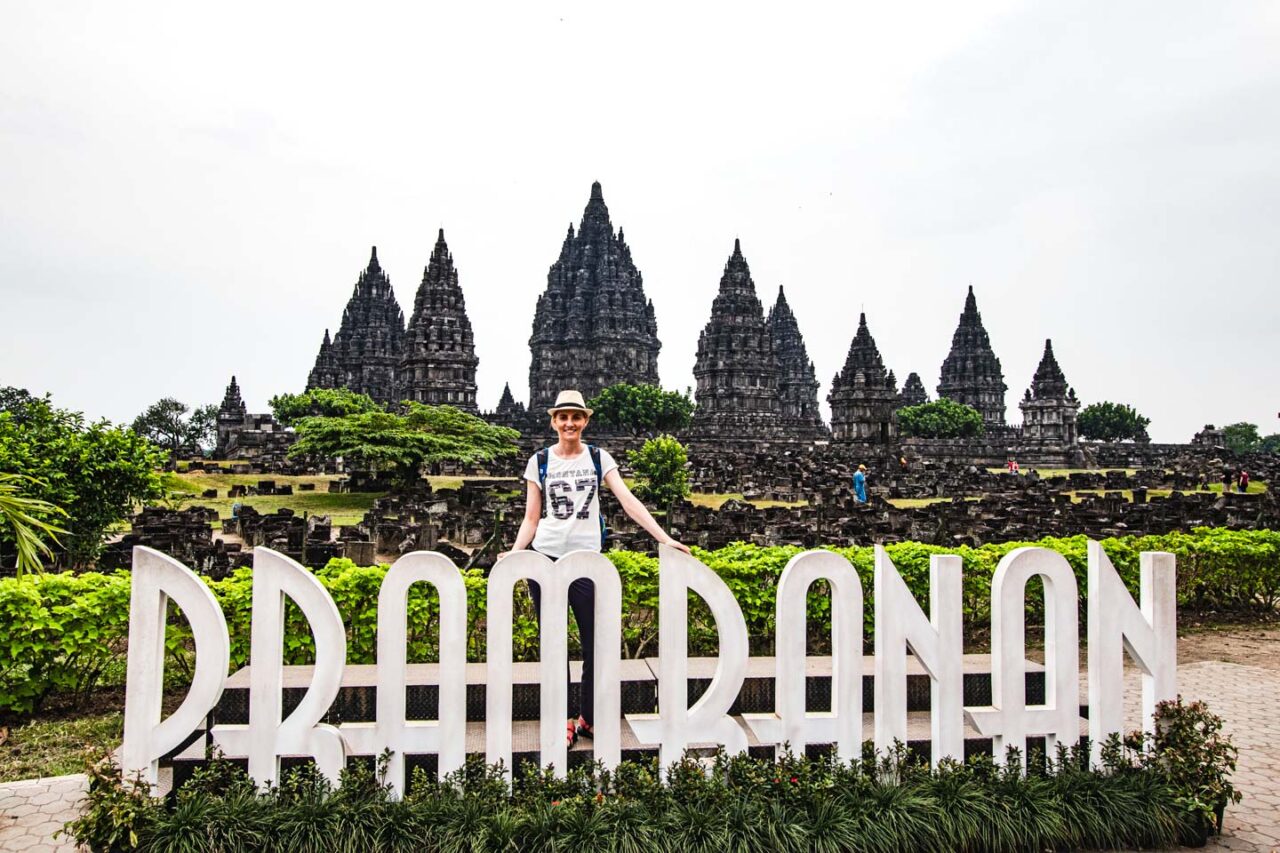
Useful Info
- The temples are open daily from 6:30 AM to 5:00 PM. Ticket costs about $24 for foreigners.
- Worth taking a guide (about $9/hour) – you’ll learn much more.
- Allow yourself at least 3-4 hours for the whole visit. And wear comfortable shoes, a hat, and sunscreen – there’s little shade and the sun is scorching!
Day 4: Sunrise over Borobudur
Day four means an early wake–up – and I mean really early! Get up at 3:30 AM to make it to the spectacular sunrise over Borobudur – the largest Buddhist temple in the world.
Seriously, there’s no better view! When the first rays of sunlight illuminate the massive stone stupas, and the fog slowly rises from the surrounding rice fields… It’s something incredible! I had tears in my eyes, I was so moved.
This temple is a true work of art – 9 levels symbolizing Buddhist cosmology, over 2,600 bas-reliefs, and 504 Buddha statues.
When you think it was built in the 8th century, without machines and modern technology – mind blown!
After returning to Yogyakarta, rest at the hotel or take a walk around the city to take it all in.

Useful Info
- Sunrise tickets cost about $30 and it’s worth buying them in advance.
- You can hire a guide on site who will tell you more about this beautiful place.
Day 5 of Your Indonesia Itinerary: Yogyakarta
On day five, keep exploring Yogyakarta. First, go to Kraton Palace where the sultan lives. This palace from the 1700s shows off local Java building style.
It’s not just a home but also keeps Java culture alive. You might see a traditional dance show while there – ask what’s happening when you visit since shows change.
After that, go to the Batik Museum. Learn how people make batik – the special way they color cloth. You can join a class and make your own batik to take home!
Then visit Taman Sari – the Water Palace, where sultans used to rest. Walking through the pools, gardens, and hidden passages is fun.
End your day at Kotagede village, known for silver making. I couldn’t stop myself from buying things – their silver work is so pretty!
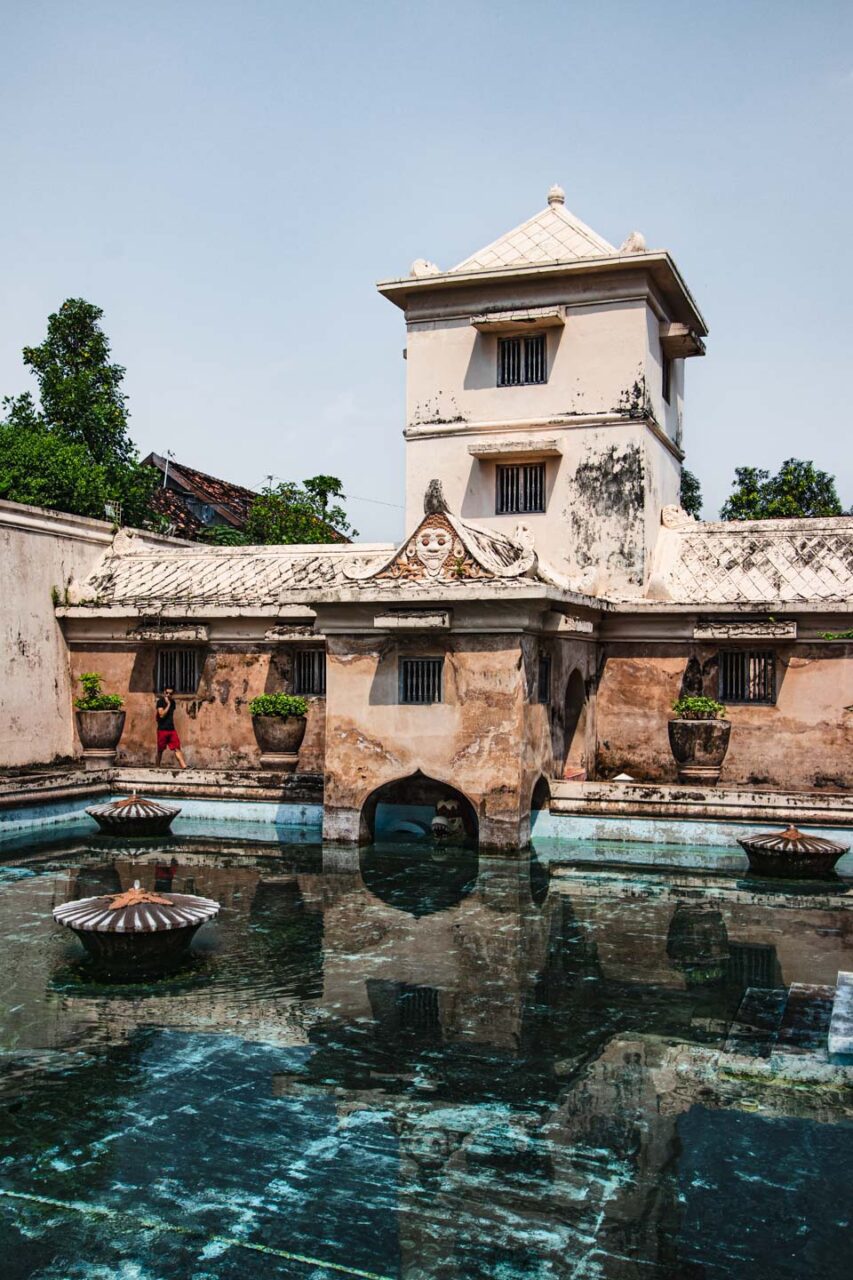
Useful Info
- Kraton Palace is open from 8:30 AM to 2:00 PM, entrance costs only about $1.
- Batik workshops cost around $4 per person.
Day 6: Yogyakarta – Waterfall and Shadow Theater
On day six, go to Taman Sewa waterfall near Yogyakarta. You can rest among the trees and swim in the clear water.
The trip through the forest to get to the waterfall is nice – you’ll see strange plants and hear birds singing.
At night, make sure to watch a traditional Java shadow puppet show (wayang kulit). It’s one of the oldest ways of telling stories in the world.
The puppet masters move leather figures behind a white sheet, making shadows and sharing old tales. It feels like magic to watch!
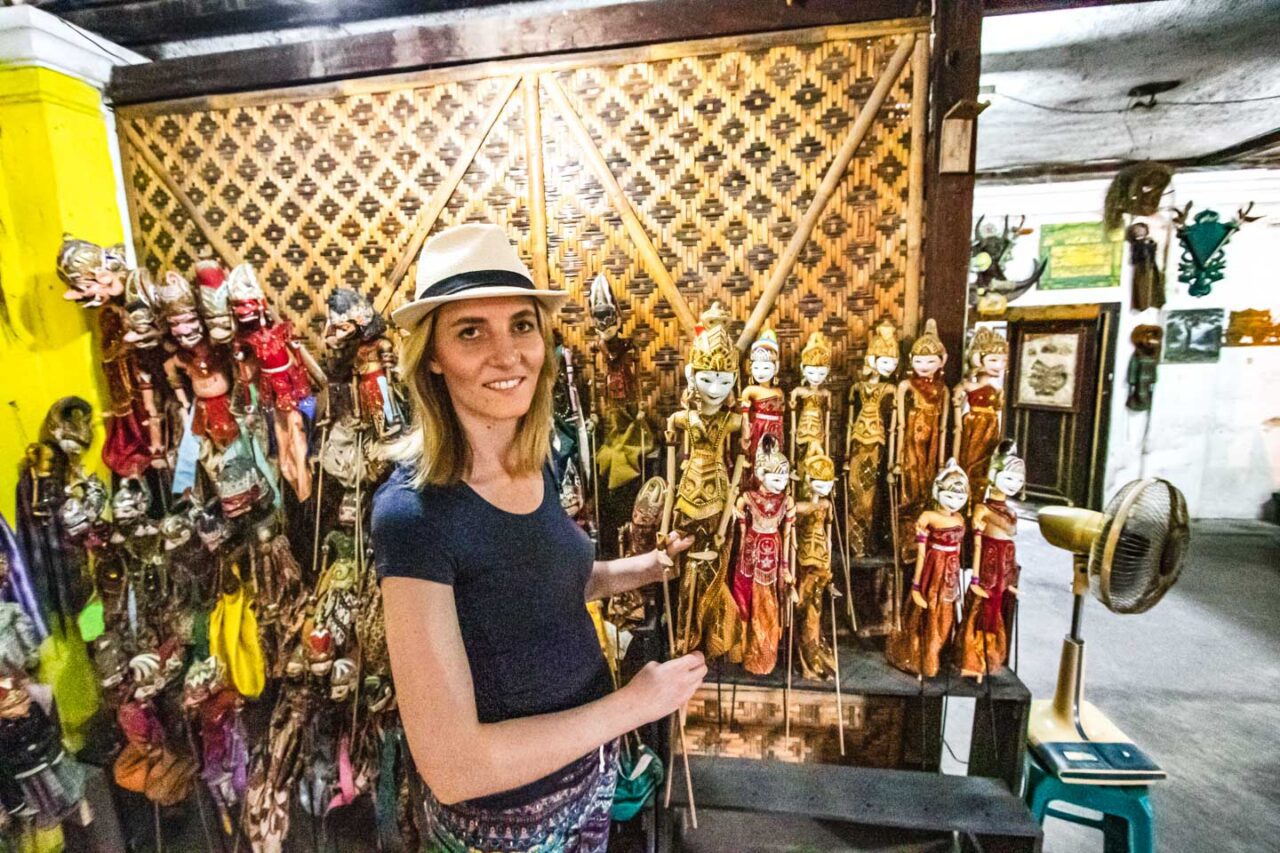
Where to Eat
Definitely drop by Gudeg Yu Djum for local specialties. Try gudeg – young jackfruit cooked in coconut milk and spices.
For fans of international cuisine, I recommend Via Via Restaurant.
Day 7: On the Way to Bromo Volcano
On day seven, you’re in for a long journey from Yogyakarta to eastern Java, to the Bromo volcanic region. The road took me almost 8 hours!
The landscape changes like a kaleidoscope – first densely populated suburbs, then juicy green rice fields, and finally rugged volcanic terrain. What diversity!
After arriving, stay at a hotel near the volcano to prepare for an early wake-up the next day.
Spend the evening resting and looking at the stars – away from city lights, the view is stunning!
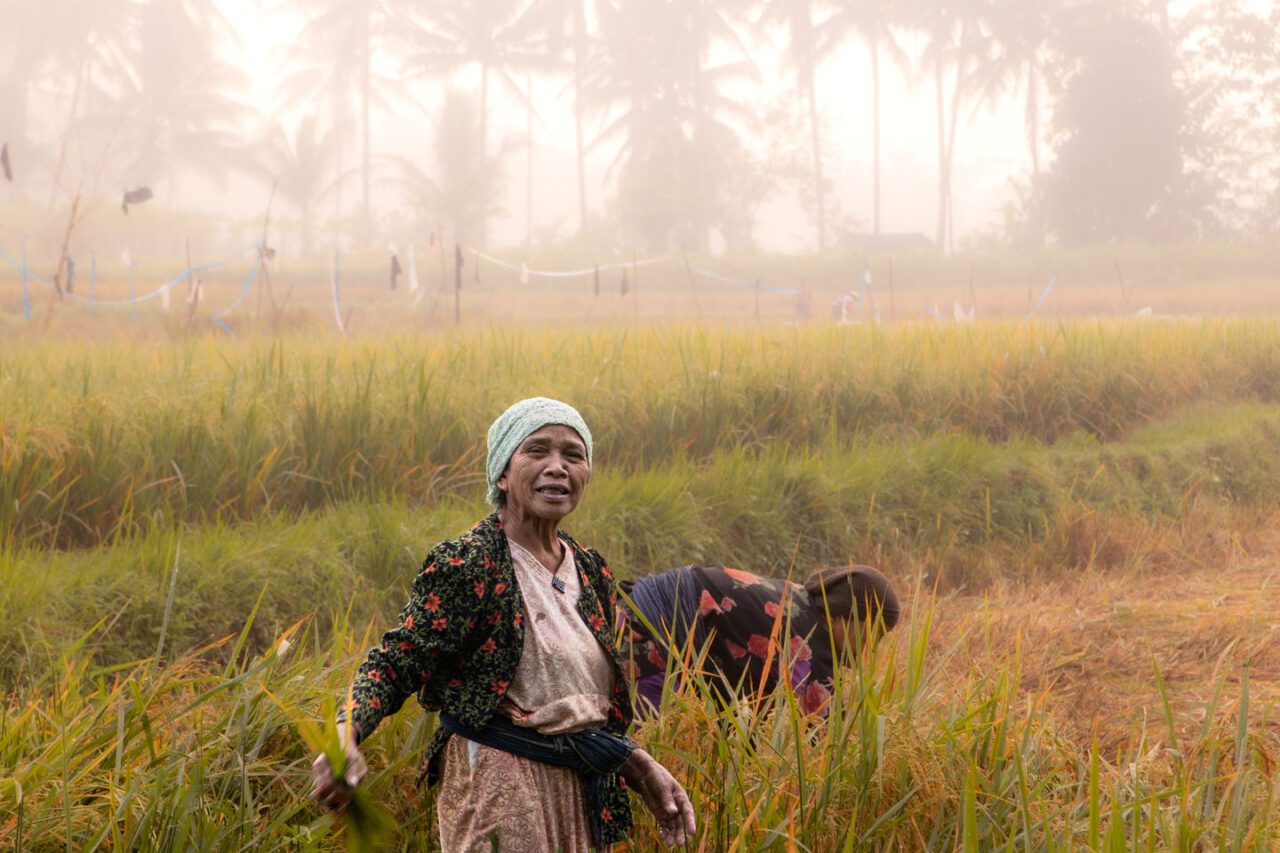
Where to Stay
I recommend Cafe Lava Hostel. Simple but comfortable hostel with an amazing view of the Bromo caldera. Great location for morning trips, and the staff will help you with everything.
Day 8: Sunrise over Bromo
On day eight, prepare for a really early wake-up. I got up at 3:30 AM to make it to the viewpoint before sunrise.
Driving a jeep in the dark on bumpy roads was… exciting, to put it mildly. I held onto the seats tightly, praying not to fly overboard!
But, oh my god, it was worth it! The view of Bromo, Batok, and Semeru volcanoes emerging from a sea of fog is something that will stay with me forever. I was taking photos like crazy, though none fully capture what I saw.
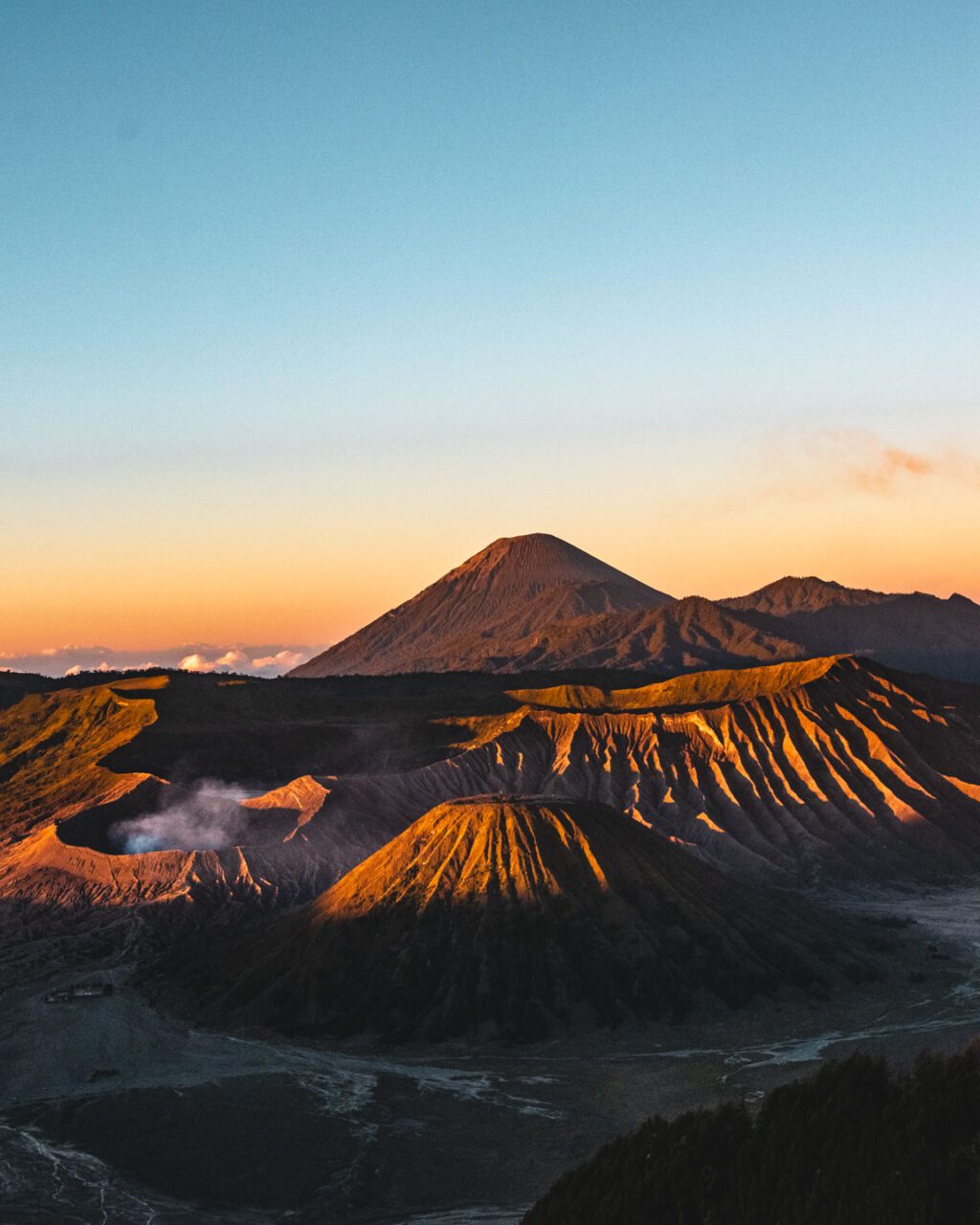
After sunrise, go down to the Bromo caldera. Cross the Sea of Sand to reach the volcano itself. You can climb the steps to the edge and look inside – it’s really amazing!
Spend the afternoon walking in the Bromo-Tengger-Semeru National Park. You’ll see many different views there – from volcano deserts to lush forests.
The Tengger people live in this area – they’re one of the few Hindu groups in Java who have kept their old ways and beliefs for hundreds of years.
In the evening, get ready for a night trip to Ijen volcano to see the special blue fire.
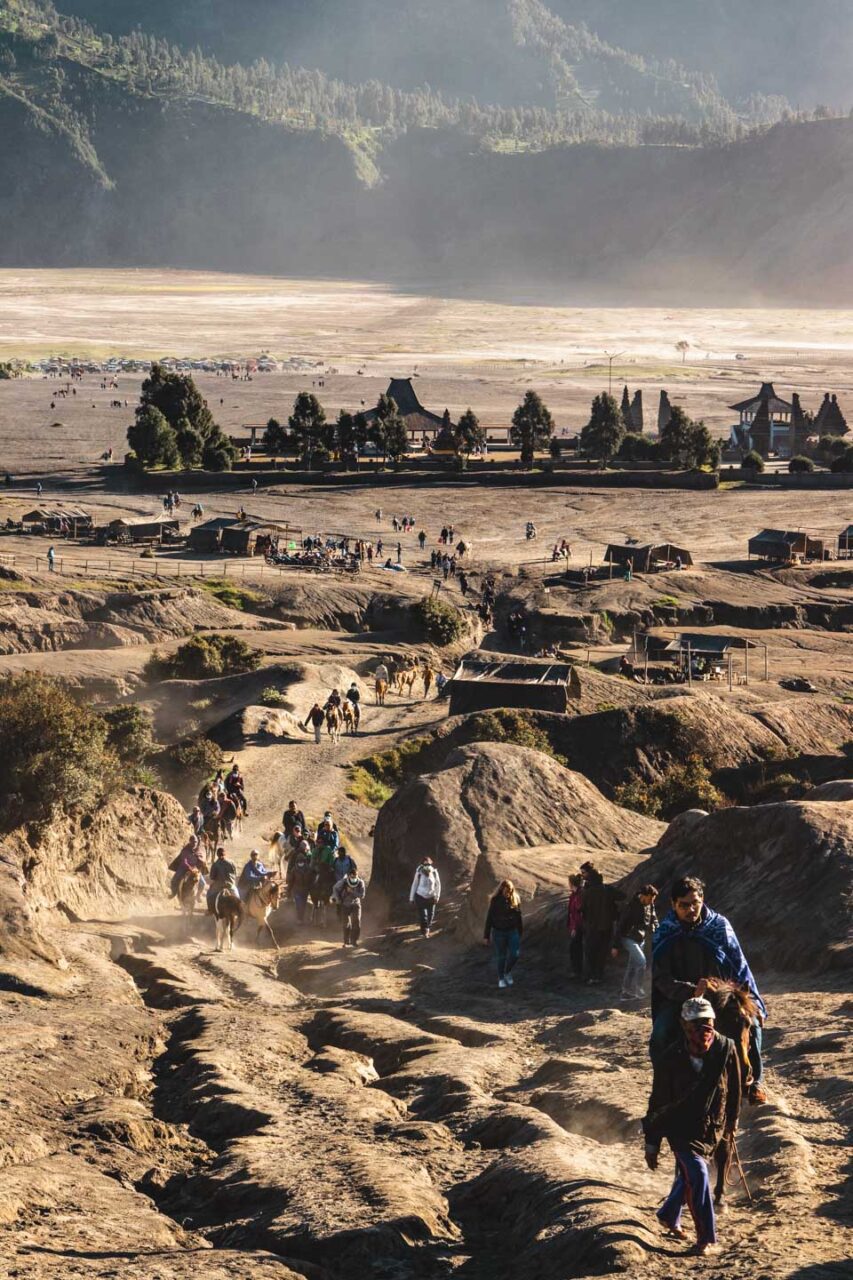
Useful Info
- Sunrise tours are best booked in advance. They cost about $20-30 per person.
- Take warm clothes – before sunrise, the temperature can drop to as low as 40°F!
Day 9: Ijen, Return to Bali and Lovina
On day nine, get ready for another night trip – this time to Ijen volcano, where you can see the special “blue fire“.
This natural wonder happens when sulfur burns, and you can only see it at night. It creates a magical, dream-like scene.
When the sun rises, you’ll see Ijen’s blue-green crater lake – the biggest acid lake in the world. The water has sulfur acid in it. Watching the morning sun shine on the blue-green water is truly amazing!
After coming down from the volcano, you go to Ketapang port and take a ferry back to Bali, ending at Gilimanuk port. The boat ride takes about 45 minutes.
From there, travel to Lovina – a beach town with black sand from volcanoes and a calm feeling. After busy days climbing volcanoes, you’ll enjoy some time at the beach!

Useful Info
- The Ijen volcano tour costs about $35-50 per person and usually starts around midnight.
- I recommend hiring a local guide and a special gas mask due to sulfur fumes.
- The ferry runs every 30 minutes, and a ticket costs only about $0.60. Transfer from the port to Lovina will take you about 2-3 hours.
Day 10: Ulun Danu Beratan and Jatiluwih Rice Fields
On day ten, visit the Ulun Danu Beratan temple, beautifully set on Lake Bratan. In pictures it looks like something from a storybook – but seeing it yourself is even better.
The temple was built in the 1600s for Dewi Danu, the water goddess.
Structures scattered on small islands give the impression of floating on the lake’s surface, especially when the water level rises. The effect? Absolute magic!
Next, go to the Jatiluwih rice fields, a UNESCO place.
It’s a true spectacle of nature – juicy green rice fields undulate to the horizon, arranging in perfect cascades.
On site, it’s worth delving into the secrets of the subak system – an ingenious way of irrigating fields that Balinese have been using for over a thousand years. It’s not just engineering mastery but also an important element of local tradition and beliefs.
After a day of adventure, head to Ubud, where you’ll stay for a few days.
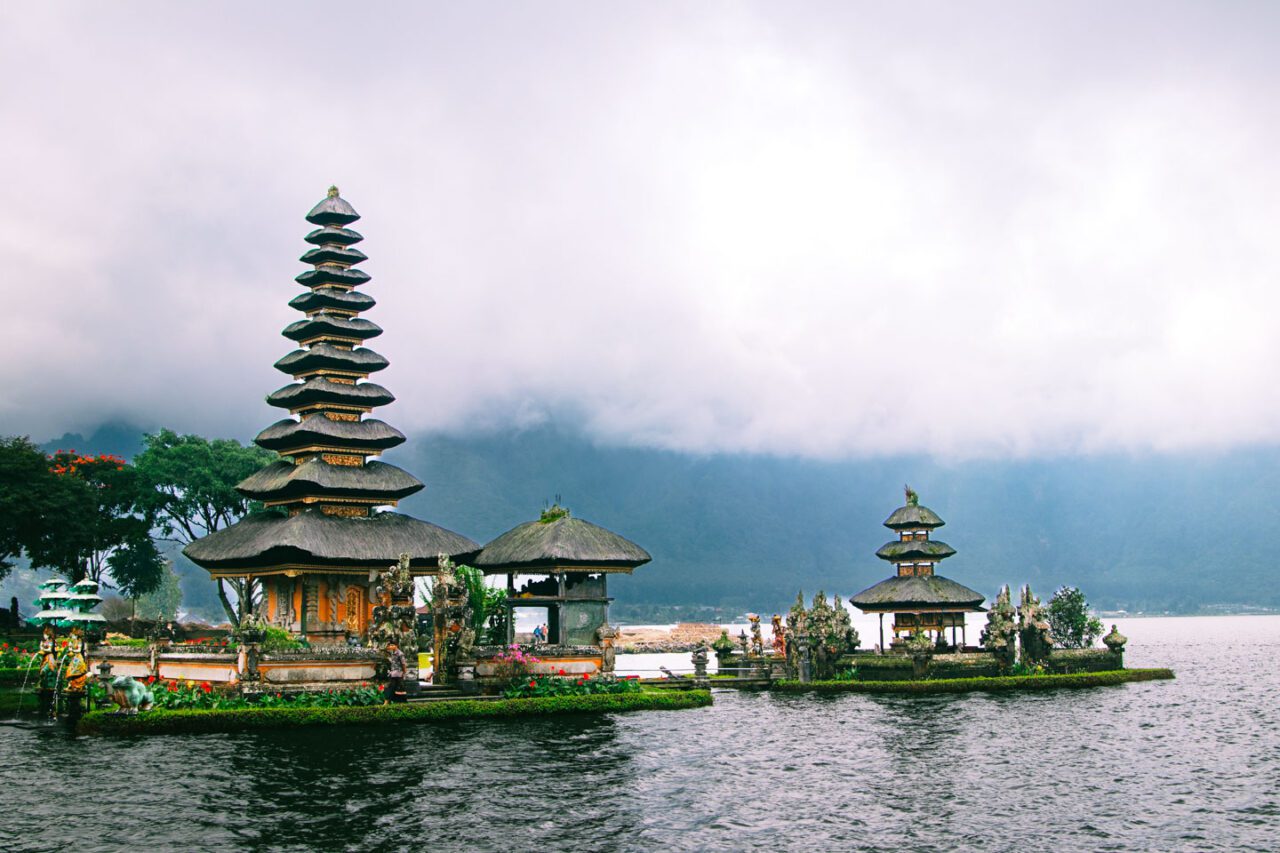
Useful Info
- The entrance to the Ulun Danu Beratan temple is around $4.50, and the Jatiluwih rice fields cost about $3.
Day 11 of Your Indonesia Itinerary: Ubud
On day eleven, it’s time to explore Ubud. This cute town in the island’s center draws visitors for its crafts, art, and yoga classes.
Yes, it’s the same place where Julia Roberts went in “Eat, Pray, Love“.
First, visit Tirta Empul Temple with its special water. They built this place over a thousand years ago for Vishnu.
The temple has 30 water spouts where local people do their cleansing ritual called melukat, going one by one through the fountains. You might want to watch or even try it yourself.
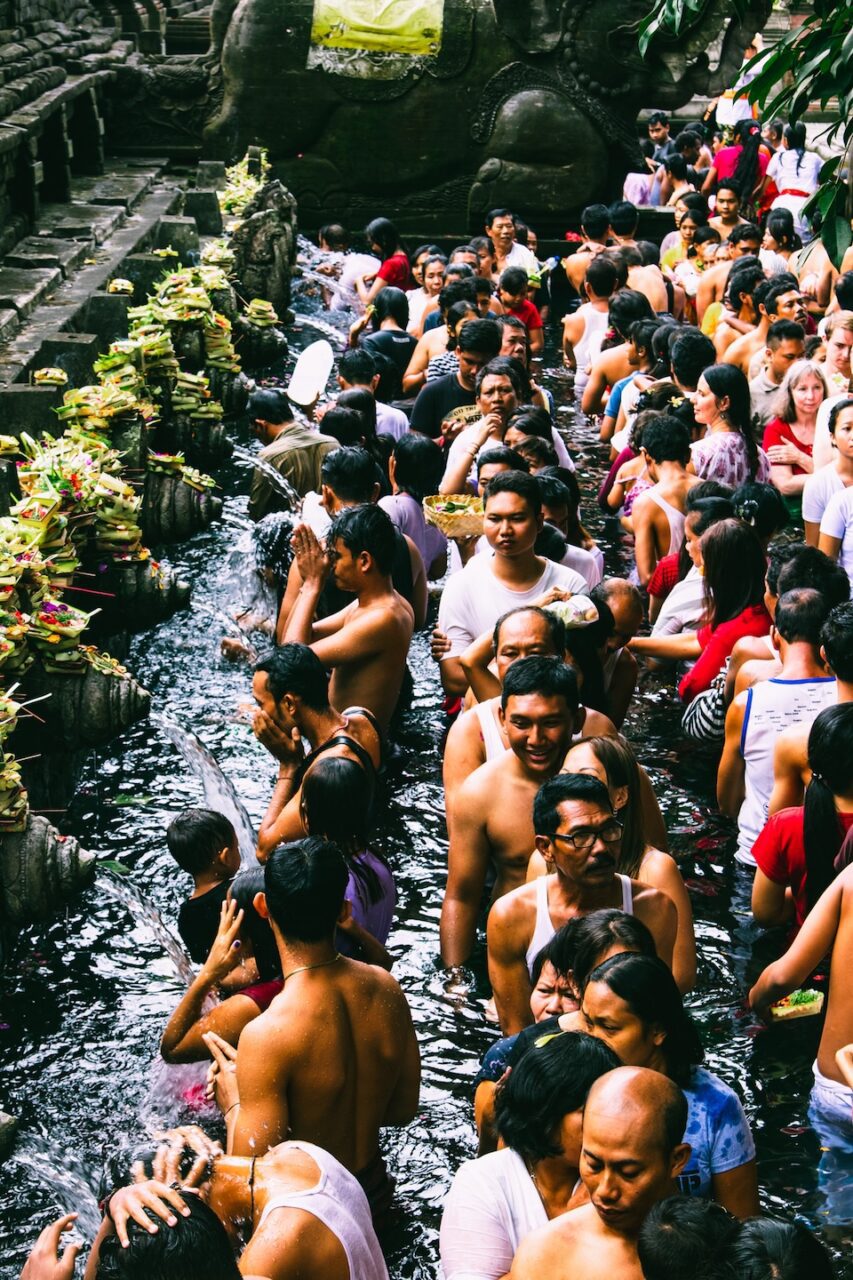
Then head to the Monkey Forest, home to over 700 macaques.
One of them tried to steal my glasses right from my face, and another pulled out a water bottle from the side pocket of my backpack – without any tugging! Clever beasts.
In the afternoon, take a peaceful walk around Ubud center.
Drop by local art galleries, craft shops, and the bustling market. It’s the perfect place to buy original souvenirs – from spices to beautiful textiles.
In the evening, time for something special – a traditional Balinese dance show. It’s an essential part of local culture and spirituality.
The most popular performances are Legong and Barong – both versions hypnotize with movement, music, and colors. A perfect way to end the day in Ubud!

Where to Stay
I recommend Ketut’s Place. It’s an inexpensive hotel located in a tropical forest by the river, with nice cottages and a pool. The place is quiet and close to nature, but also close to Ubud center.
Useful Info
- Entrance to Tirta Empul costs about $4.50 per person. Remember about appropriate clothing – you need to have covered shoulders and legs; you can rent a sarong on site.
- Entrance to the Monkey Forest on weekdays is about $6, and on weekends a bit more expensive – about $7 for adults.
Day 12: Chilling in Ubud
On day twelve, focus on rest and feeling good in Ubud – a place known for health and peaceful living.
Start your day with morning yoga at one of the many pretty studios. No matter if you’re new or experienced, doing yoga among the green plants feels wonderful.
After yoga, enjoy some time at a spa. The Bali massage is special – it mixes pressure points, nice smells, foot work, and some yoga moves. You’ll feel very relaxed and refreshed!
In the afternoon, visit the Puri Lukisan Museum – the oldest art museum in Ubud. You’ll see both old and new art here – from detailed carvings to amazing paintings.
For the evening, walk on the Campuhan Ridge path. It’s not hard to walk, but you’ll see great views – green valleys, beautiful rice fields, and feel the calm Ubud mood. A perfect way to end your day!
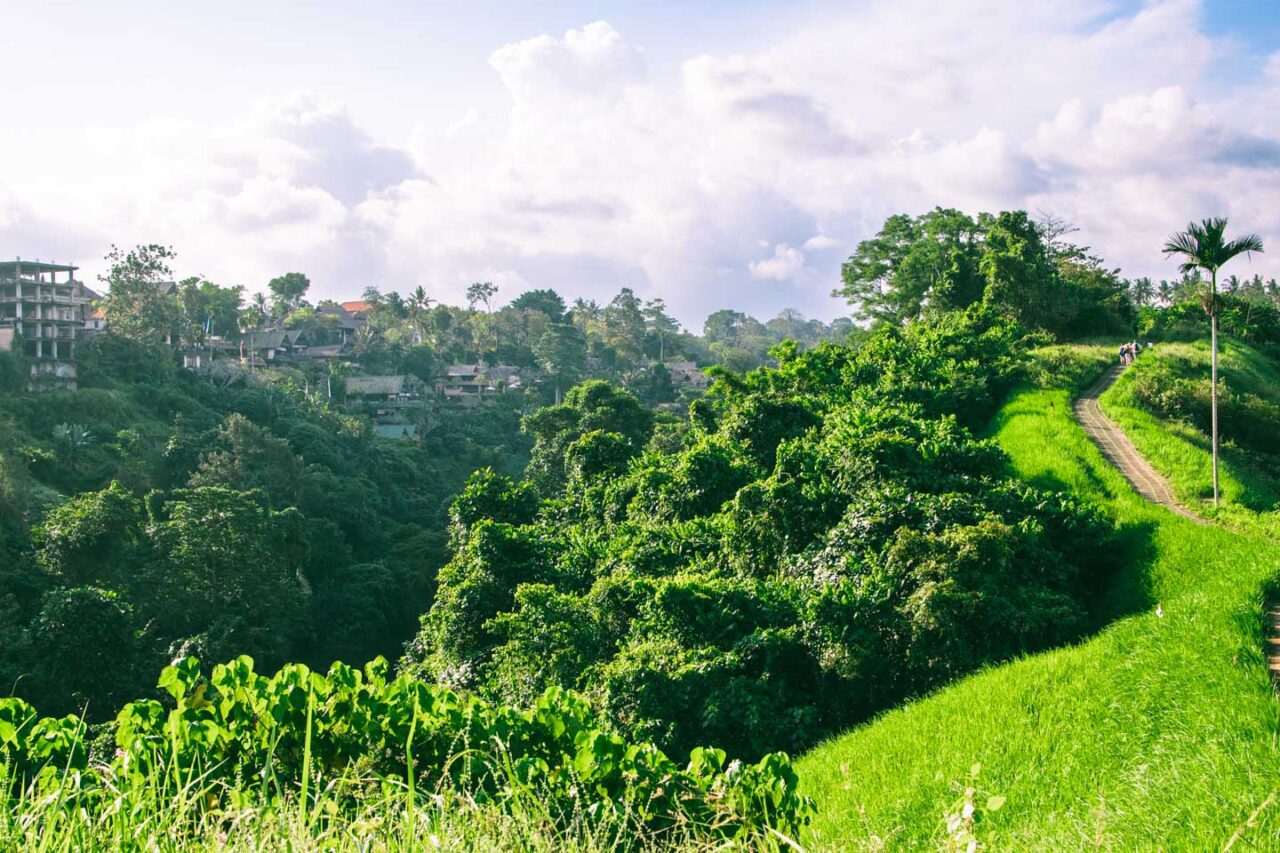
Where to Eat
Definitely visit Moksa – it was one of my culinary revelations! The menu is based on fresh vegetables from the garden, and every bite is pure poetry.
For fans of traditional cuisine, I recommend Puspa’s Warung – authentic Balinese dishes at good prices. For dessert, stop by Room4Dessert for amazing sweets.
Useful Info
- Entrance to the Puri Lukisan Museum costs about $5.50 per person.
Day 13: Tegalalang and Kintamani
On day thirteen, early in the morning head to the Tegalalang rice terraces, about 20 minutes drive from Ubud.
This is one of those places in Bali that looks like a postcard – juicy green terraces cutting into the hilly landscape.
Walk between the terraces, take photos, and see with your own eyes how the traditional rice cultivation system works.
If you feel like it, try one of the popular swings or jump into a “nest” – these are places created for epic photos!
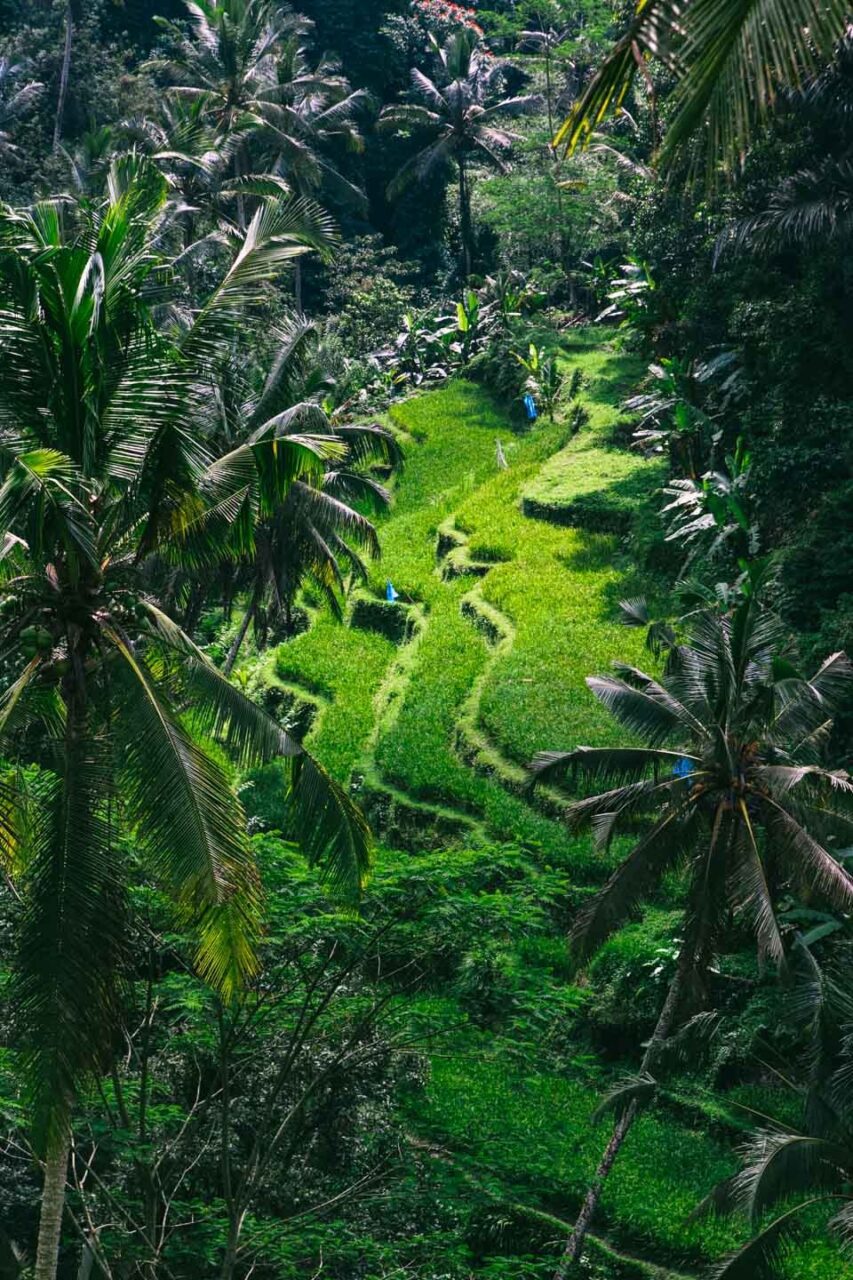
The next place to visit is Kintamani, a mountain area northwest of Ubud. People come here to see the big Mount Batur volcano and the lake next to it.
When you get there, try to eat at a restaurant with a big view. The volcano (5,633 feet tall) standing over the area and the huge crater with its lake look amazing.
Spend your afternoon relaxing in the Toya Devasya hot springs by Lake Batur. Warm water and volcano views are all you need to feel happy.
At night, get ready for a climb up Mount Batur volcano to watch the sunrise. Bring warm clothes, good shoes, a light, water, and some food – the morning will be worth it!
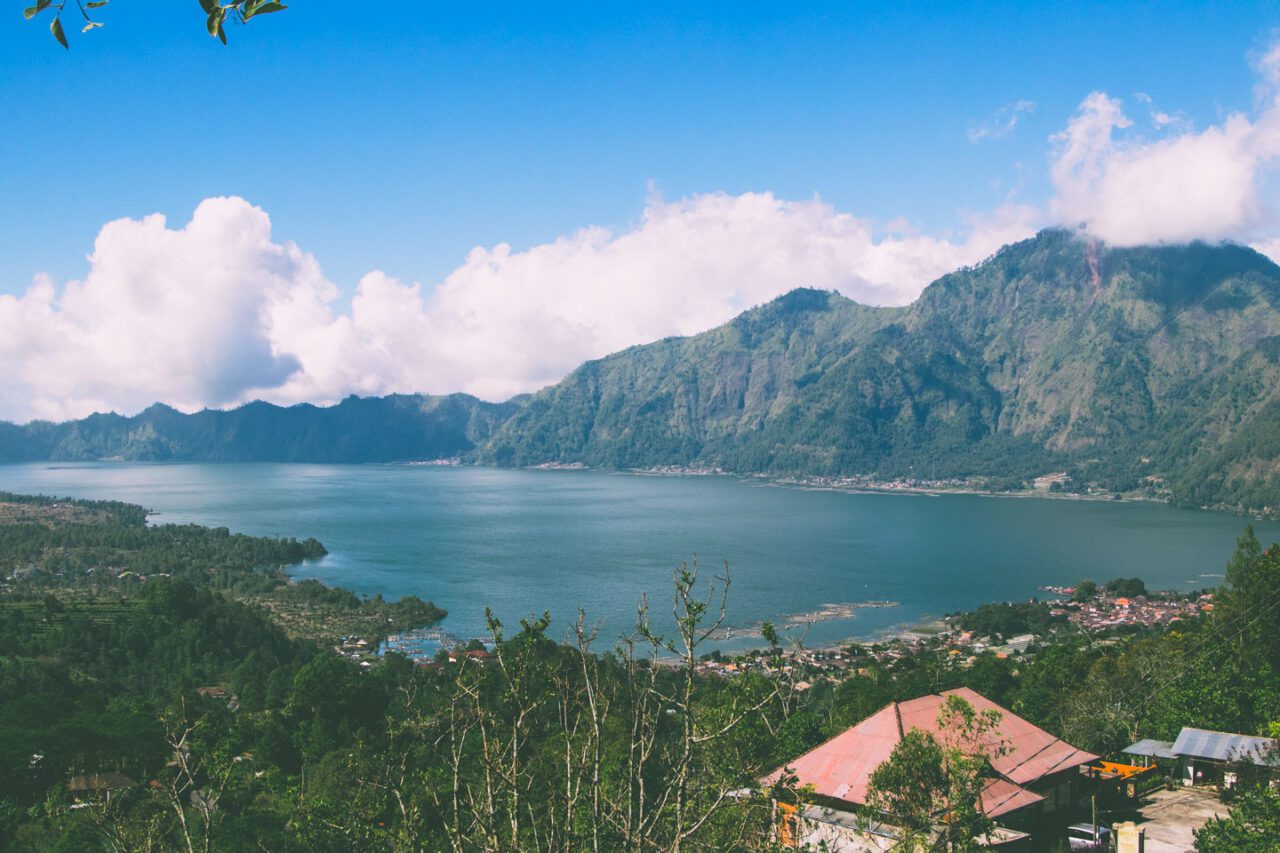
Useful Info
- Entrance to the Tegalalang rice terraces costs about $1.50, plus possible donations for local farmers.
- Swings and “nests” cost extra, usually $10-17.
- Entrance to the Toya Devasya hot springs is about $17 per person.
Day 14: Sunrise on Mount Batur and Pura Besakih
On day fourteen, you’ll climb Mount Batur. Your journey starts super early (about 2 AM) to get to the top for sunrise.
Most hikers finish the climb in about two hours, and you don’t need to be really athletic to make it. And the view from up there? Totally worth it!
When the sun peeks over the horizon, it turns everything golden – the lake below, the sky above – while fluffy clouds float underneath like you’re walking above heaven itself.
I still think about this moment whenever someone asks about my Bali trip!
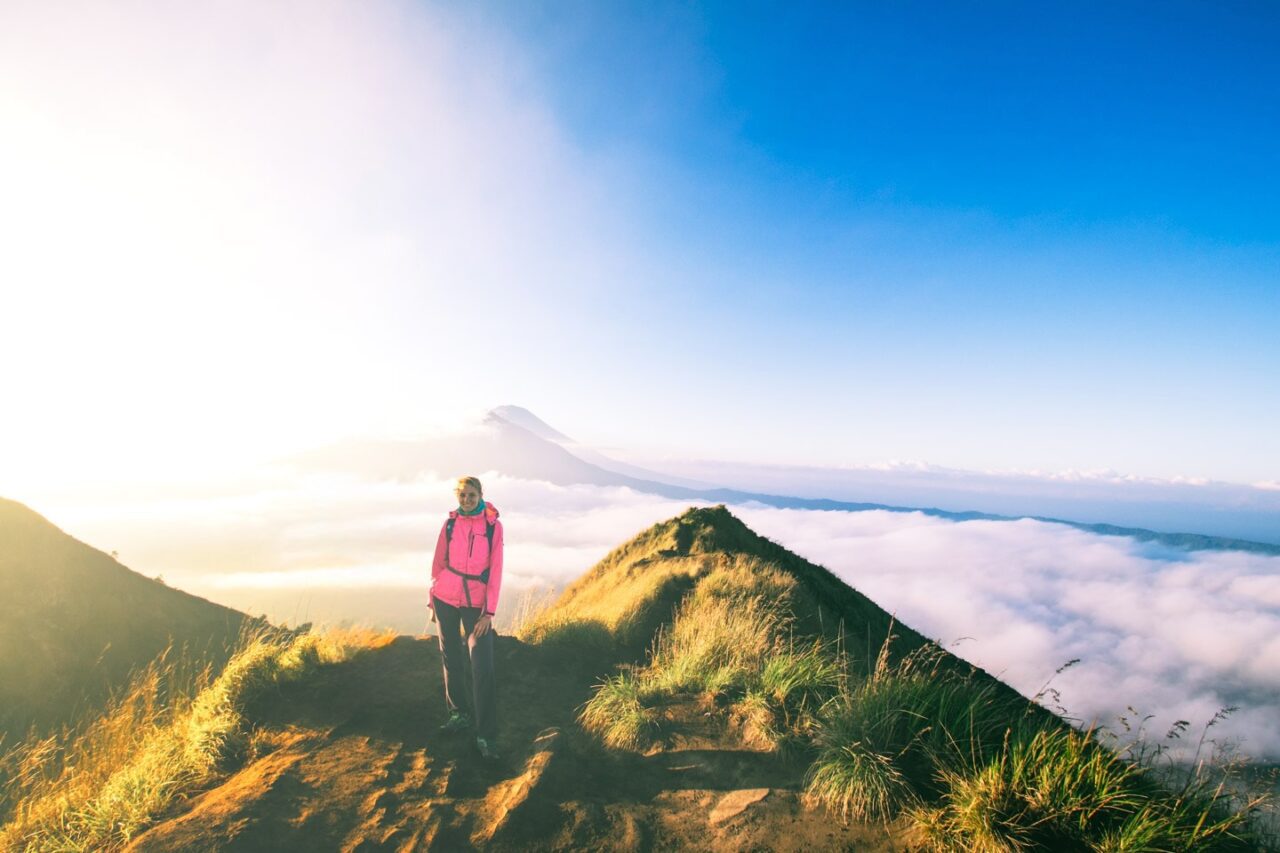
After descending and a short rest, head to Pura Besakih – the largest and holiest temple in Bali.
It’s a true giant! Spread on the slopes of Mount Agung, it’s over 1000 years old and is still the spiritual center of the island.
After visiting Pura Besakih, go to Padang Bai port. From there, hop on a fast ferry and sail to Gili Trawangan – a tiny island where bikes, horses, and a divine slow life atmosphere reign.
After checking into your hotel, find yourself a chill spot on the beach and enjoy the sunset over the ocean.
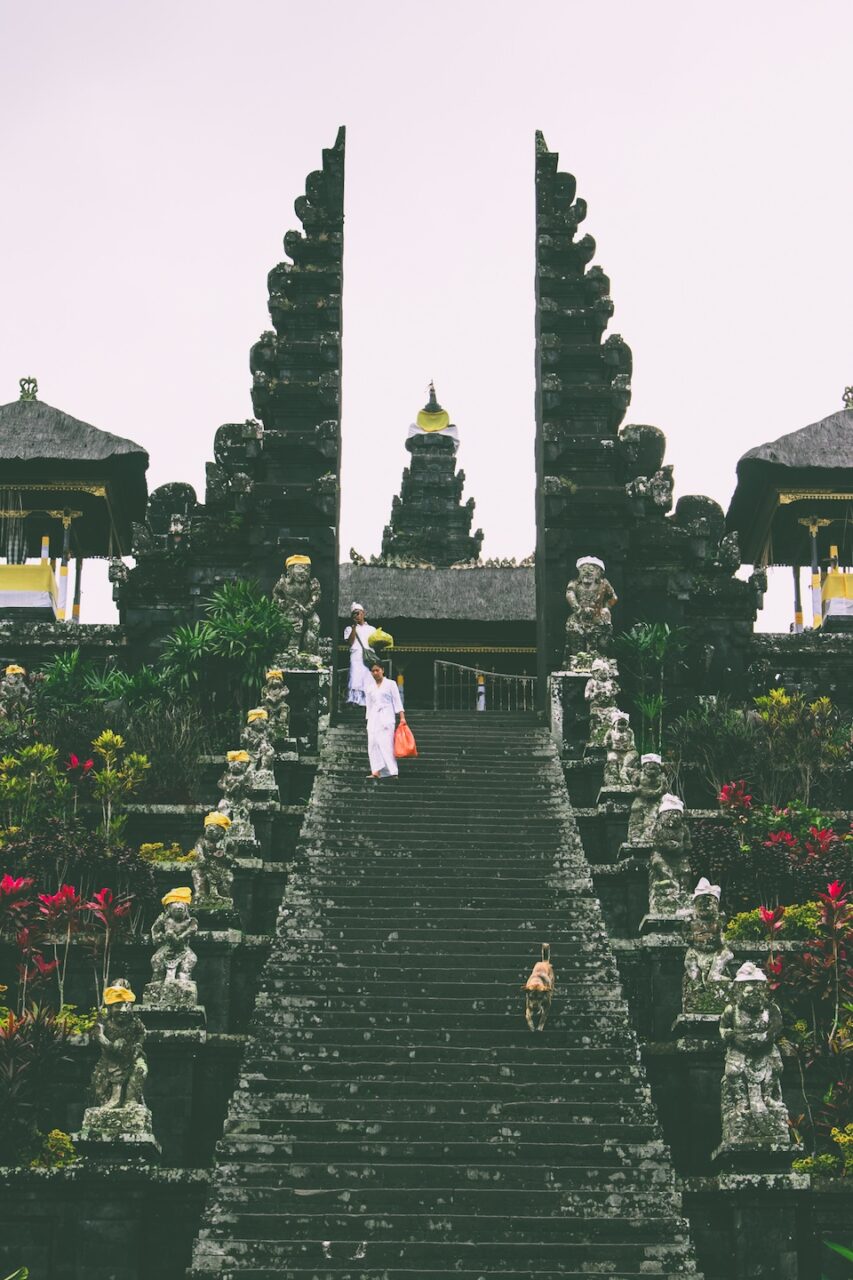
Useful Info
- The Mount Batur trek costs about $25-30 per person, depending on the organizer. Usually, the price includes transportation, guide, and breakfast at the summit.
- Entrance to Pura Besakih costs about $8.50 per person. Remember about appropriate clothing – you can rent a sarong on site.
- Fast boat from Padang Bai to Gili Trawangan costs about $22-30 per person one way. The journey takes about 1.5-2 hours.
Day 15-17: Gili Trawangan
Enjoy the next three days on Gili Trawangan with nothing but rest and fun.
This tiny island feels like a dream come true – soft white beaches, bright blue-green water, and not a single car anywhere! People get around on horses or bikes instead.
Water lovers will feel right at home here – you can swim alongside giant turtles and see rainbow–colored reefs just below the surface.
Grab a bicycle and tour the whole island (takes only about 2 hours) or try riding horses by the ocean while the sun goes down.
When night falls, Gili Trawangan wakes up for some good times. The beach bars serve drinks in real coconut shells, put out comfy chairs, and play chill music. It’s lively but not crazy loud – just right for vacation vibes.
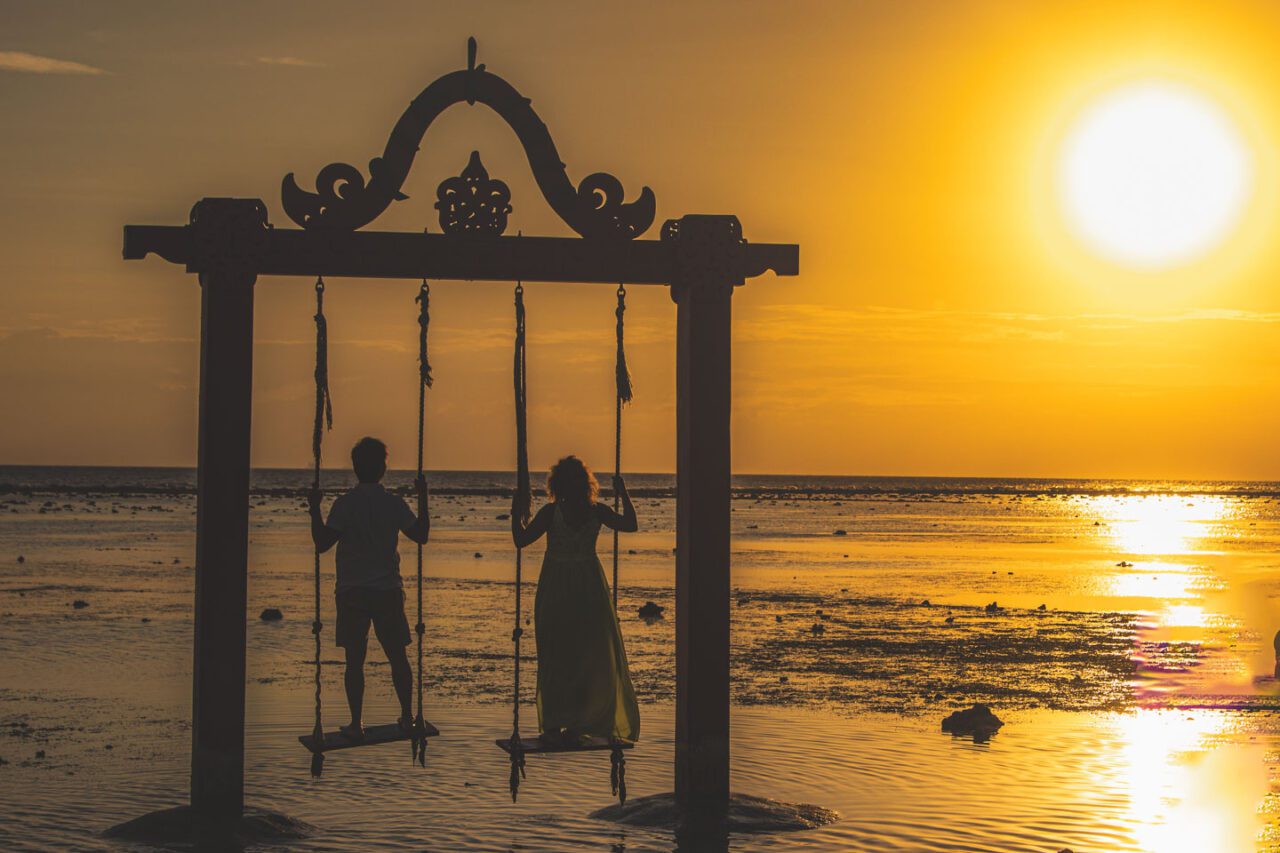
Where to Stay
I recommend PinkCoco Gili Trawangan. It’s a stylish place in a tropical garden with a pool, a few steps from the beach. A perfect place for epic sunsets!
Day 18: Return to Bali – Jimbaran
On day eighteen, return by boat to Bali, to Serangan port, and from there go to Jimbaran, known for its beautiful beach and the best seafood on the island.
After checking into your hotel, head straight to the beach. Rent a lounger under the palms, catch some sun, or dive into the warm water.
Nothing beats the view of local fishermen returning from fishing on traditional Balinese boats!
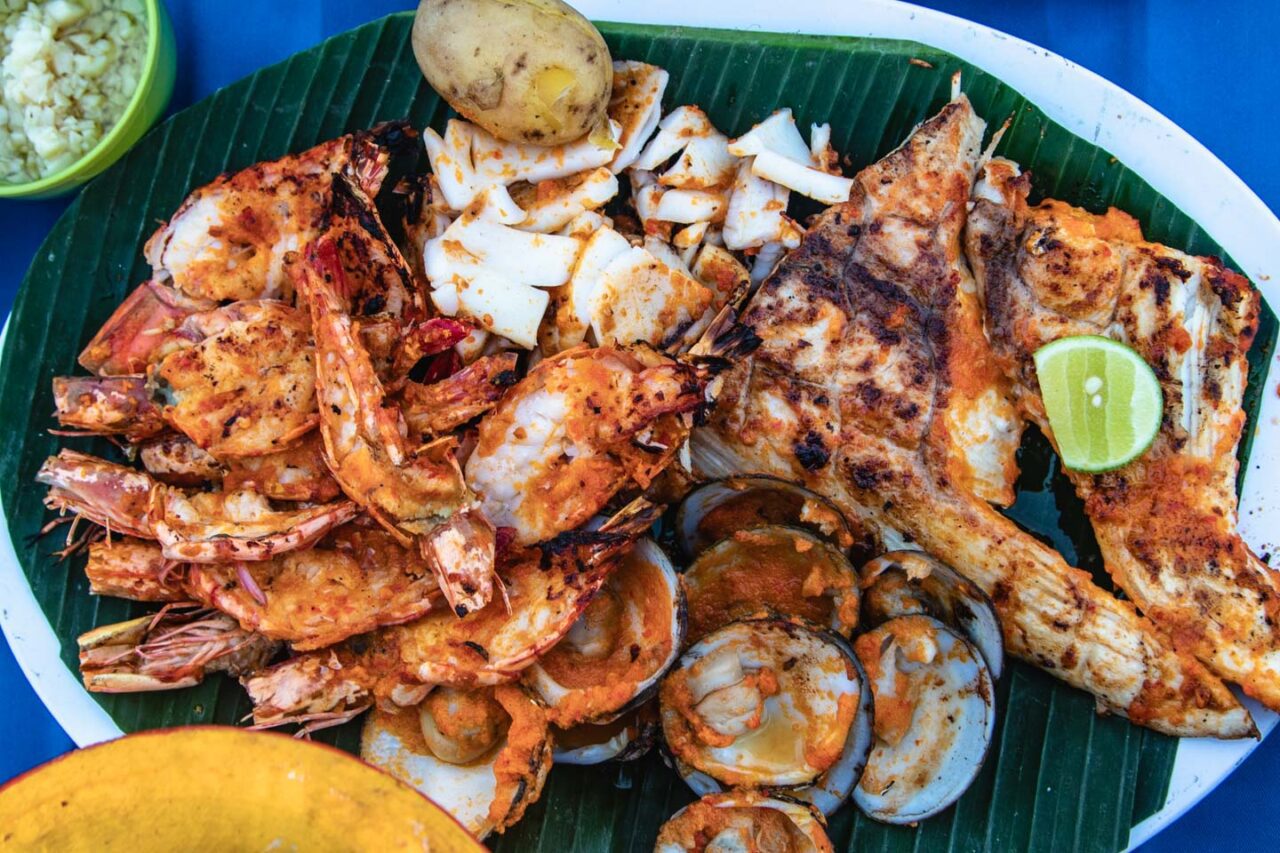
As the day winds down, pick one of the beachfront eateries that line the shore.
Find a table right on the sand and try the fresh-caught seafood, cooked over fire in the local style – plump shrimp, daily fish, tender squid, and juicy lobsters, all served with steaming rice and their spicy sambal sauce.
I still dream about this meal sometimes – honestly the most incredible food I tasted during my whole time in Indonesia!
Enjoy your dinner while waiting for nature’s evening show to begin.
When the whole sky lights up with warm gold, deep orange and rich red, and the sun finally touches the ocean horizon, you’ll suddenly understand exactly why people call Jimbaran one of the most romantic spots anywhere in Bali.
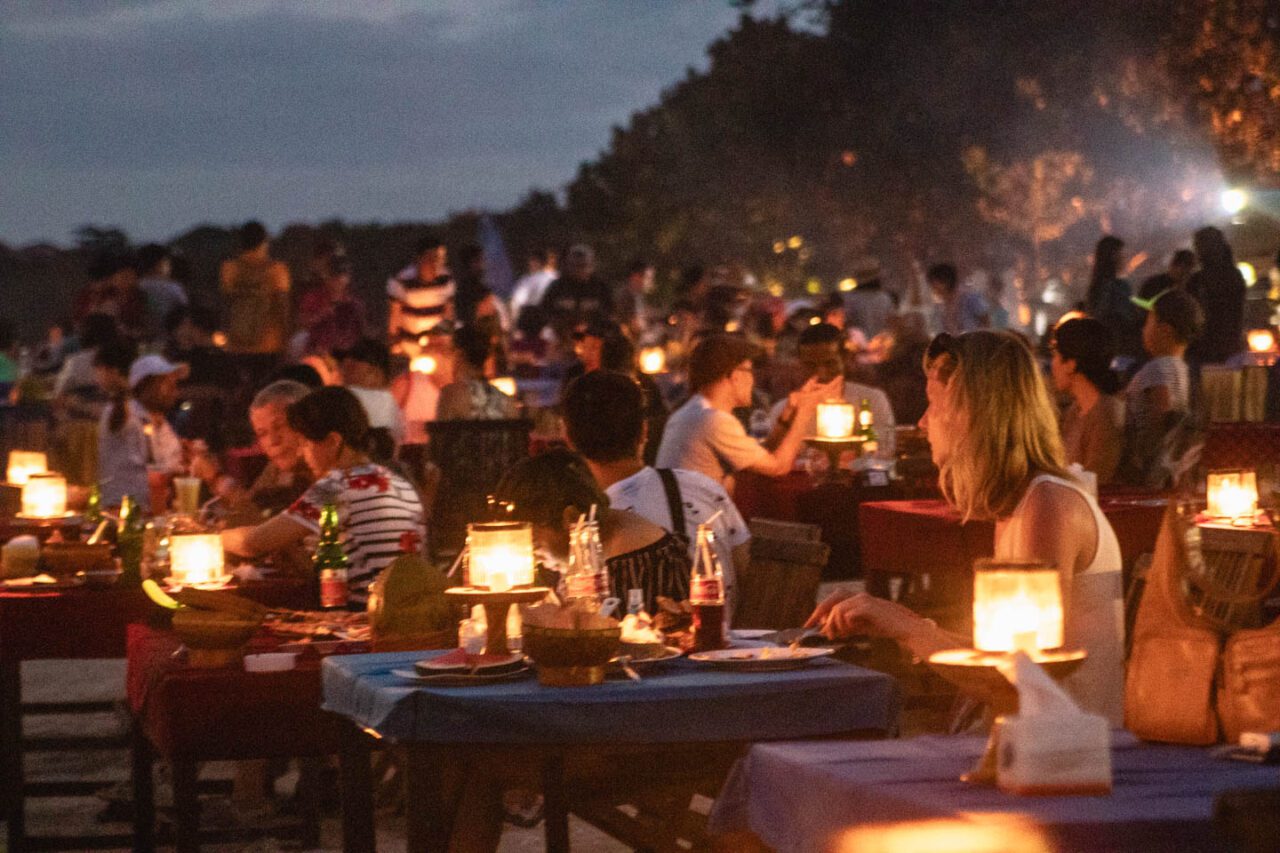
Useful Info
- Ferry from Gili Trawangan to Serangan costs about $45 per person and takes about 3.5 hours.
- Transport from the port to Jimbaran costs about $7-10 by taxi.
- Seafood dinner on Jimbaran Beach costs about $15-25 per person, depending on the restaurant and dishes chosen.
Where to Eat
Definitely try fresh seafood at one of the restaurants on the beach. I recommend Menega Cafe – they have some of the best grilled fish and seafood on the island.
And if you’re looking for something more elegant, Cuca Restaurant will be a bullseye – creative cuisine with local ingredients.
Day 19: Southern Beaches of Bali – Nusa Dua and Uluwatu
On day nineteenth, rent a scooter and go explore southern Bali, starting with the exclusive Nusa Dua region.
Beaches in Nusa Dua are like from promotional folders – perfectly white sand, crystal water, and palms leaning over the shore.
In the afternoon, head to Uluwatu temple located on a 230-foot cliff. The views are so spectacular that it’s hard to focus on sightseeing!
Definitely stay in Uluwatu for sunset and the Kecak dance performance.
It’s a hypnotizing show during which dozens of men sit in a circle and make rhythmic “chak-chak-chak” sounds, creating a musical background for dancers performing scenes from the Ramayana epic.
With the cliff and setting sun in the background – simply magic!
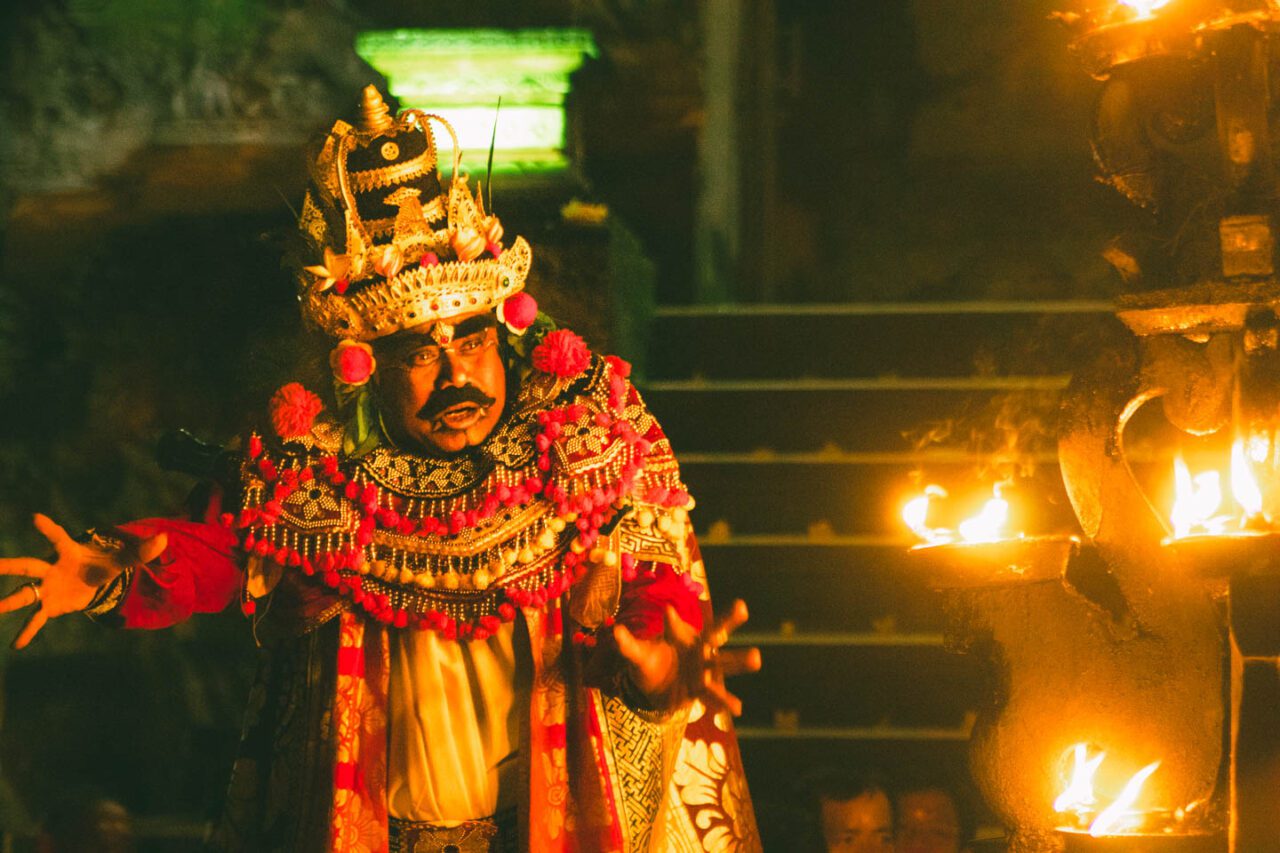
Where to Stay
I recommend Le Yanandra Bali Resort – white bungalows, palms, and a pool you’ll jump into after a day at the beach. Peaceful, atmospheric, and just a stone’s throw from Balangan Beach!
Useful Info
- Entrance to Uluwatu temple costs about $3 per person. Ticket for the Kecak dance show costs about $5.50.
- Remember about appropriate clothing for the temple – you need to have covered shoulders and legs; you can rent a sarong on site.
- And watch out for monkeys in Uluwatu – they’re clever and steal everything they can! Hide your glasses, phones, and jewelry!
Day 20: Padang Padang and Bingin Beaches
On day twenty, explore some amazing beaches in south Bali that most visitors never find – Padang Padang and Bingin Beach. They aren’t as famous as other spots, but believe me, they’re special places!
Head out early to Padang Padang Beach, which you might recognize from that movie where Julia Roberts travels around finding herself. It’s a tiny but beautiful cove with huge rocks all around it.
Getting to the actual sand means squeezing through a small gap between giant rocks – which makes arriving at this beach feel like discovering a secret place!
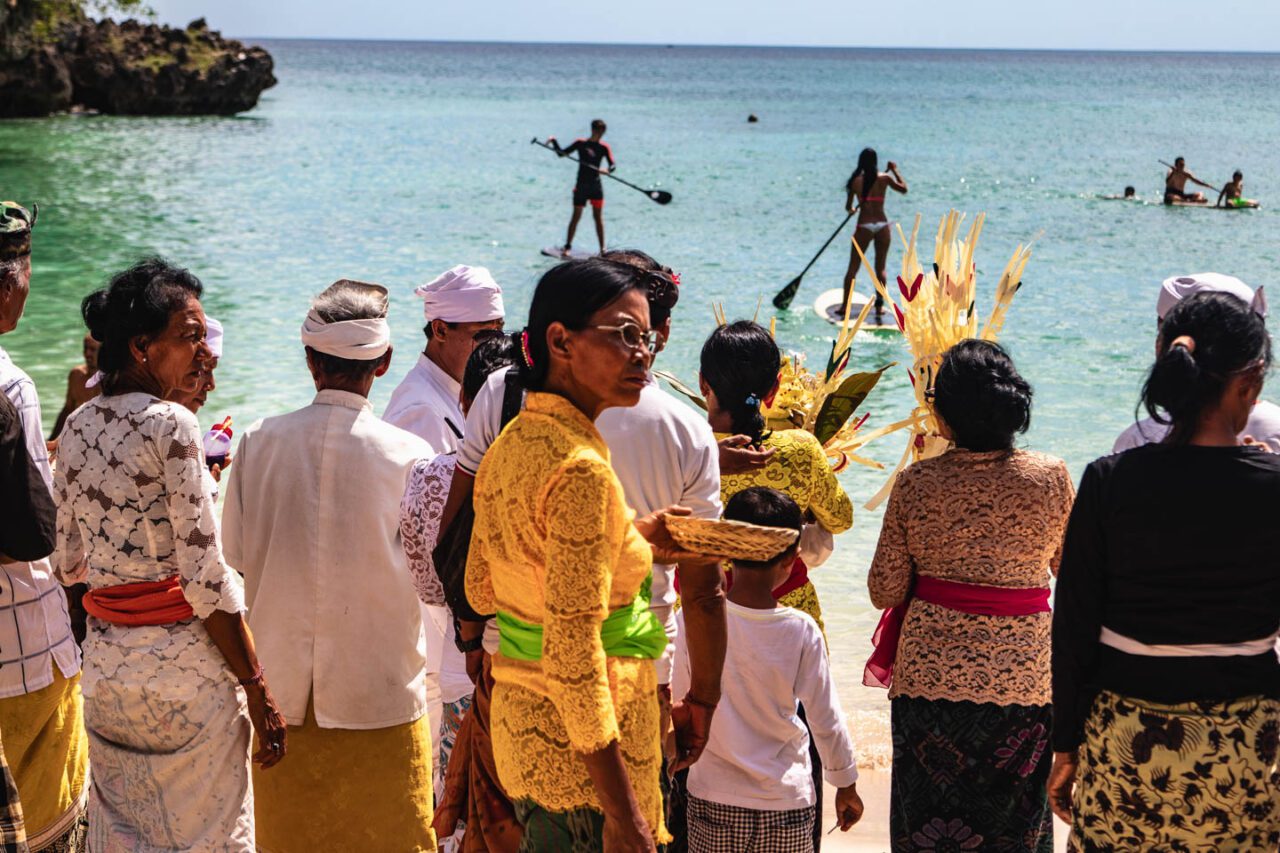
After eating at one of the tiny beach restaurants, visit Bingin Beach – another secret spot you find by walking down steep steps cut into the cliffside.
The climb might leave you breathing hard, but seeing that stretch of pure white sand and gentle rolling waves makes every step worthwhile.
Use your afternoon to splash in the clear blue water or watch the talented surfers dance across the big waves – they put on quite a show without even trying!
For the perfect ending to your Bali journey, return to Uluwatu to catch one final breathtaking sunset.
Choose one of the stylish hangouts perched on the cliff edge, maybe Single Fin or OMNIA Dayclub.
Holding your favorite drink and enjoying a delicious meal, watch as the golden sun melts into the vast ocean. Years from now, when someone asks about Bali, this is the memory that will flash through your mind first!
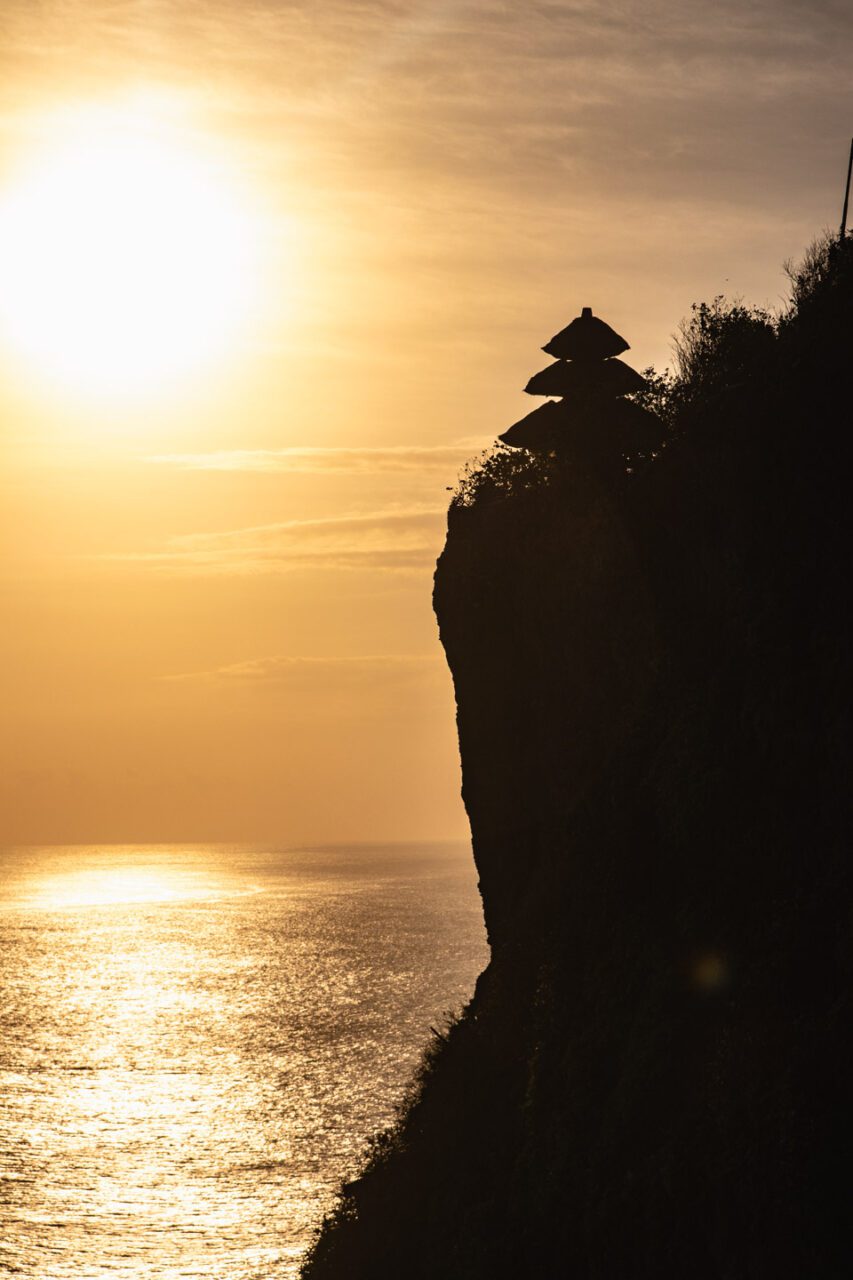
Useful Info
- Entrance to Padang Padang Beach costs about $0.60.
- Descent to Bingin Beach is quite steep – take comfortable shoes!
- Dinner at a trendy restaurant with a sunset view in Uluwatu is an expense from $20 upwards per person.
Day 21: Return Home
On the last day, it’s time to say goodbye to the tropical paradise.
Pack your bags and head to Denpasar airport to return home with a head full of amazing memories from Indonesia!
Useful Tips
Getting to Indonesia
Getting to Bali takes some effort if you’re coming from America. There aren’t any flights that go straight there. You’ll need to stop somewhere else first – maybe Singapore, Dubai, Hong Kong, or Seoul.
The whole trip usually lasts between 20 and 24 hours, depending on where you’re flying from and how long your layovers last. Expect to pay at least $1000 for a ticket that brings you there and back home again.
I flew with Qatar Airways and had to change planes in Doha. It wasn’t too bad actually. My 3-hour layover gave me time to walk around, eat, and rest before the next flight.
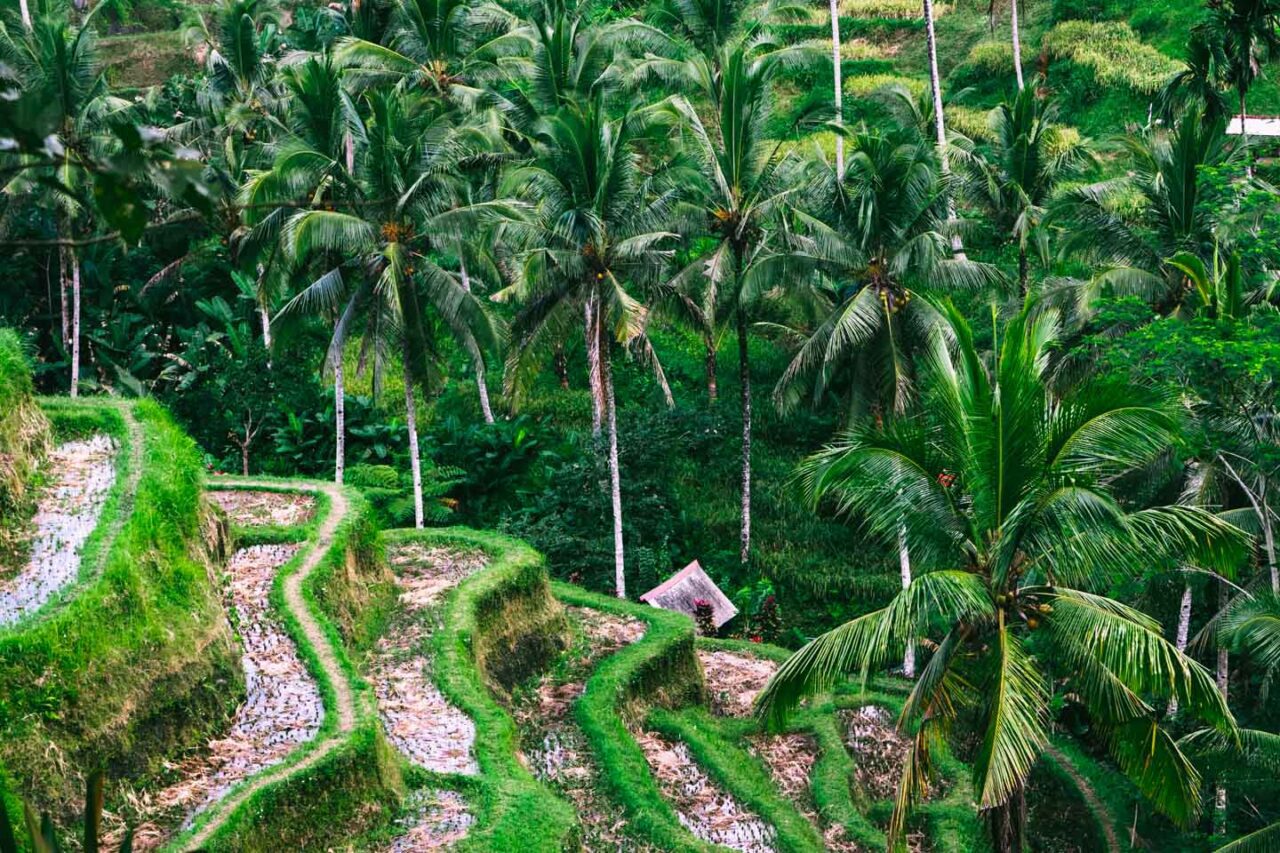
Best Time to Visit
The best time is May–September (dry season). I was there in June and caught maybe 2 short rains throughout all 3 weeks!
From October to April is the rainy season – it rains almost every day, often heavily. This makes sightseeing difficult, and some roads may be impassable.
June and July are the driest months but also the most crowded. So if you want good weather and want to avoid crowds, it’s best to go to Indonesia in May or September.
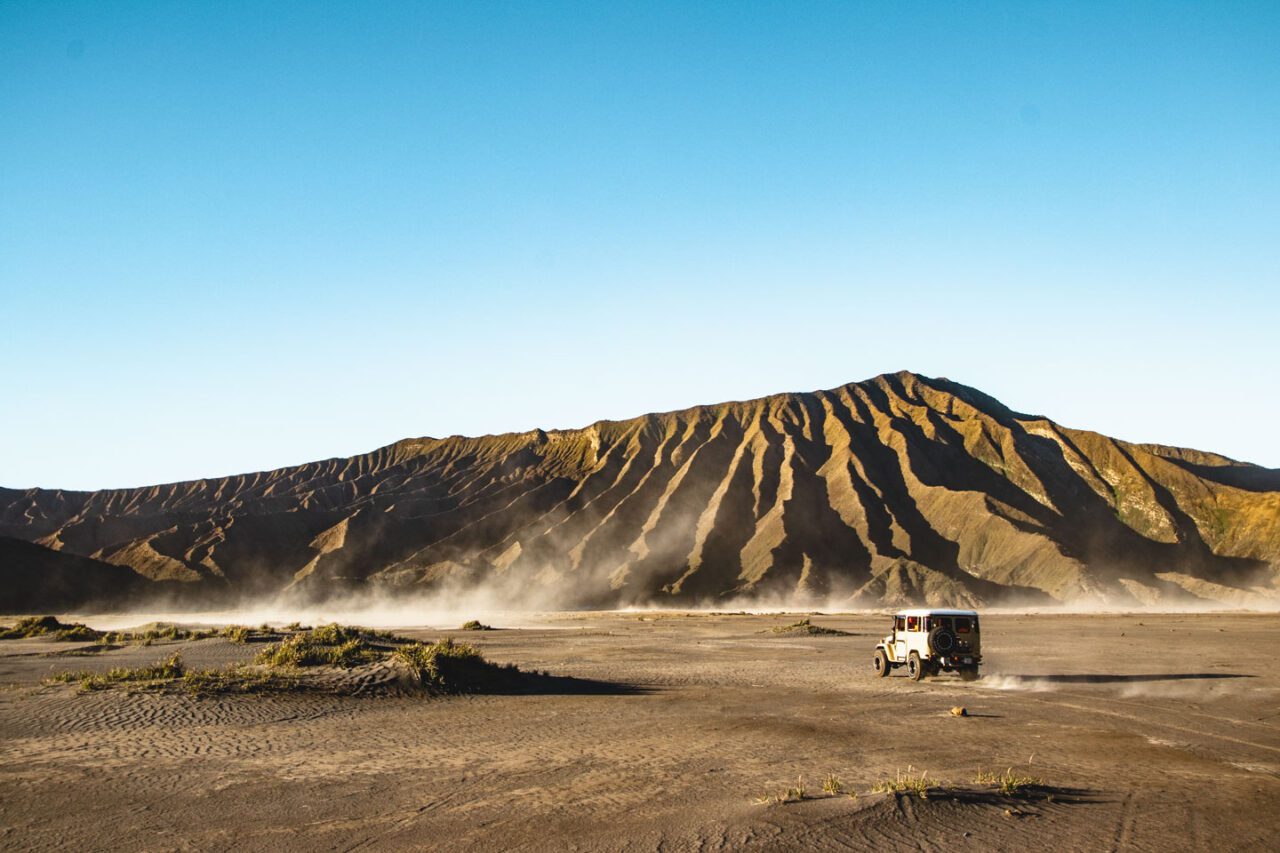
Travel Budget Calculator
Get your free Travel Budget Calculator now and plan your trip without the stress of overspending!
Getting Around
Getting around this huge country requires strategy:
- Between islands: best to fly! Domestic flights are cheap ($50-100) and save a lot of time. Ferries also work but are slower and sometimes canceled in bad weather.
- On Bali: rent a scooter ($4-6/day) or a car with a driver ($35-50/day). If you don’t have experience riding a scooter in Asia, I highly recommend the option with a driver. These people are masters at navigating traffic chaos!
- On Java: here it’s best to use a driver or organized tours. Distances are considerable, and roads can be poor.
I had a wonderful driver who drove me around Bali for a week. Not only did he drive well, but he also told interesting stories about local culture and showed places that aren’t in guidebooks.
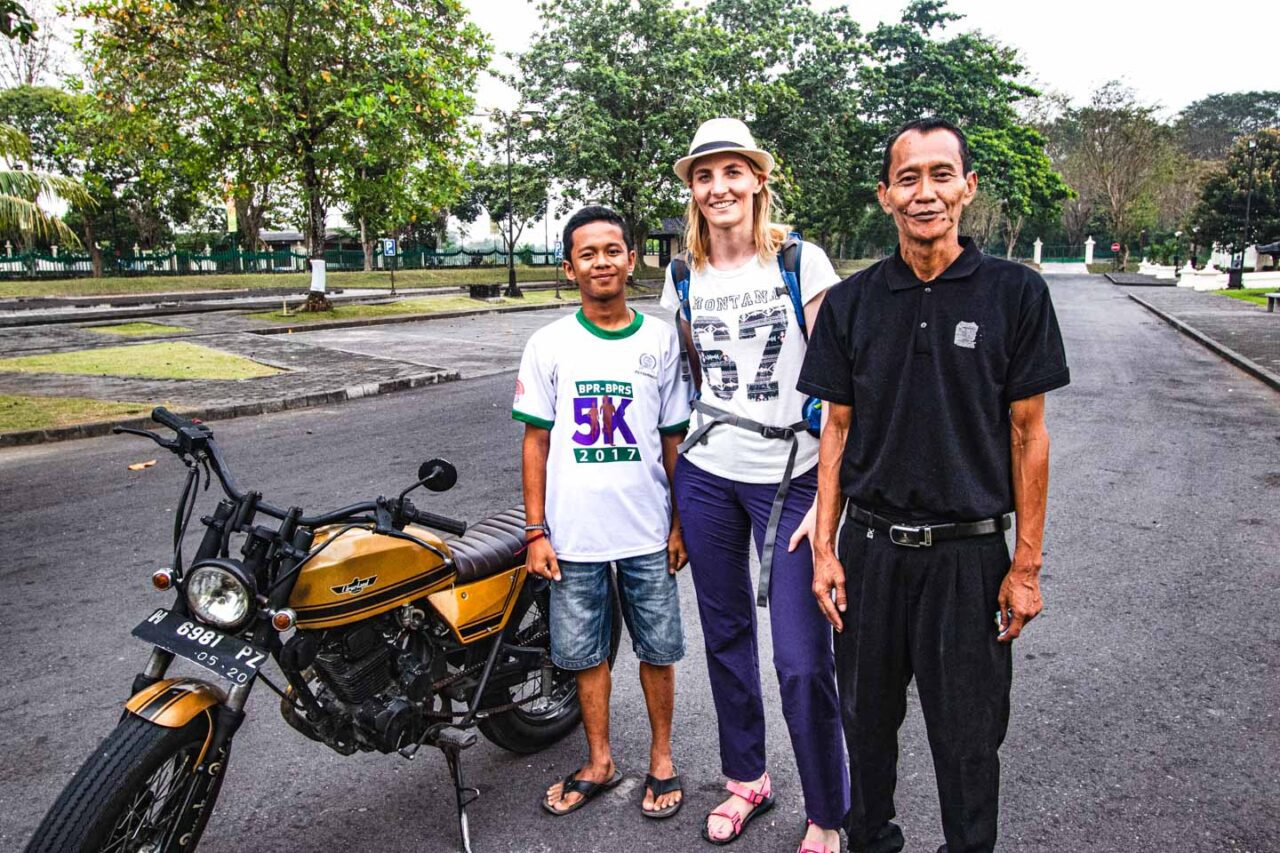
3-Week Indonesia Itinerary: Final Thoughts
Indonesia taught me that the world is much more diverse than I could imagine. Each island has a different culture, language, cuisine… It’s like traveling through several countries at once!
I value conversations with locals the most. Their cheerful approach to life, despite often modest conditions, gave me a new perspective.
When I think back to those conversations over tea on a rice terrace or under a palm on the beach, my heart immediately warms up.
And that food! To this day, I try to recreate the taste of nasi goreng or satay in my kitchen, but somehow it never tastes the same. I guess it lacks that special ingredient – Indonesian sun and the smiles of the cooks.
If you’re wondering whether it’s worth going to Indonesia – my answer is: absolutely yes! It’s a journey that changes perspective and stays in your heart forever.
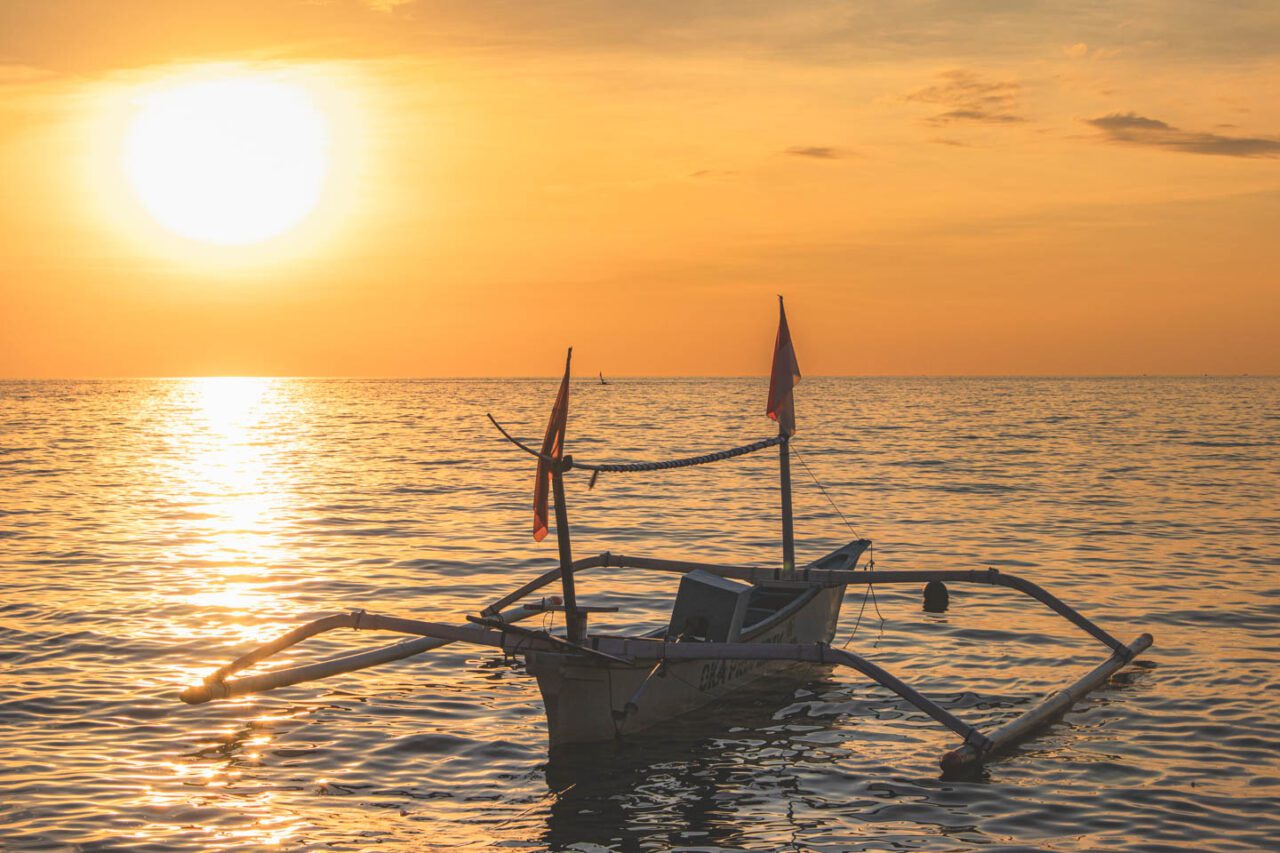
PS: If my 3-week Indonesia itinerary turns out to be helpful, I’ll be grateful if you share it with your friends!
More articles you might be interested in:
- Why Mount Bromo, Indonesia Should Be on Your Bucket List
- Is Java Island Worth the Visit? Pros and Cons You Need to Know
- 8 Absolutely Best Places to Eat in Ubud, Bali
- 14 Very Best Things to Do in Ubud, Bali for First-Timers
- The Ultimate First-Timer’s Travel Guide to Gili Trawangan
This article contains affiliate links. If you make a booking through these links, I may earn a commission, supporting this blog. Rest assured, my recommendations are based on honest assessments, and using these links doesn't affect prices for you. Thank you for your support!

